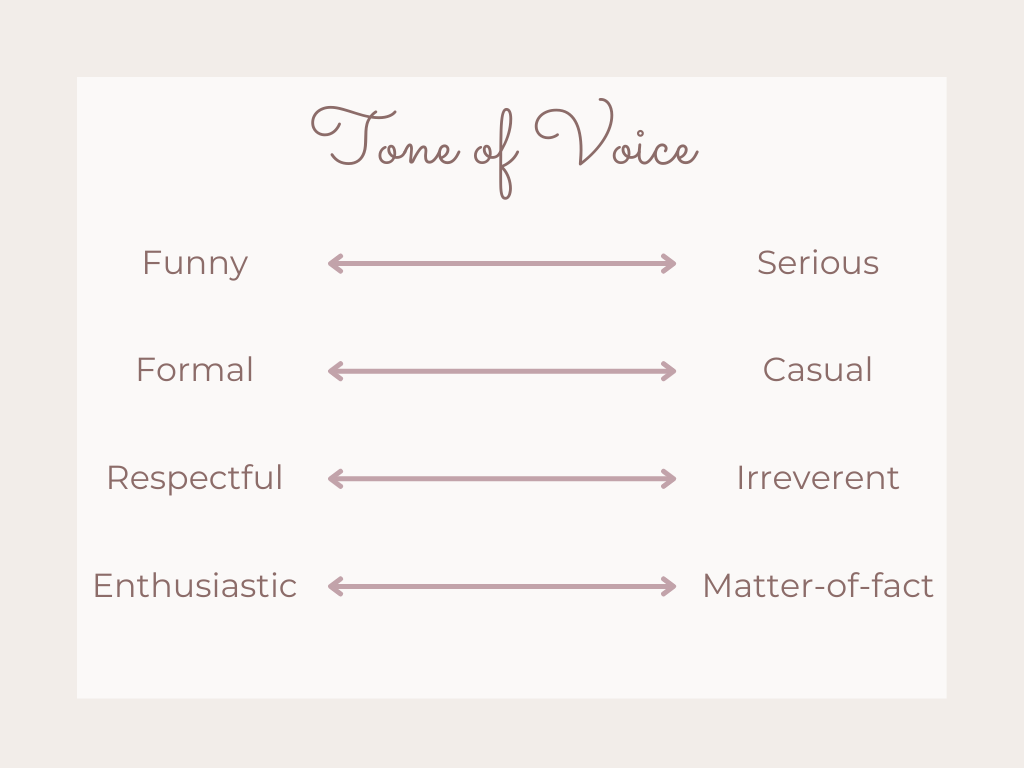Effective Brand Messaging: How to Craft the Perfect Message

Brand messaging helps establish your unique identity as a brand. Effective brand messaging can guide your business’s direction and communication to attract and retain customers. Keep reading to learn how to create a powerful brand message for your business.
A brand message is a clear and concise statement that communicates the core values and positioning of a brand. It should be authentic, consistent, and relevant to the target audience. An example of a brand message is McDonald’s “I’m Lovin’ it” or Nike’s “Just do it”.
In this article you will learn how to create a brand message that will help your business succeed.
What you will learn:
What is brand messaging?
Before delving into what brand messaging involves and how to craft the perfect message, you need to understand some basics about branding.
What is branding?
Branding is the marketing practice of building an identity for your business that differentiates your product or service from others. A strong brand helps to establish a business’s identity and is a powerful tool for attracting and retaining customers.
The branding process includes your business’ name, logo, color scheme, font and brand messaging. It also includes the way you present your business through your marketing materials, website, and social media presence. Here is a more in depth article on how to build a brand.
Effective branding helps to establish a clear and consistent message about your products or services, and builds trust and credibility with customers. It also helps to differentiate you from your competitors in order to establish a strong presence in the market.
Brand messaging
Brand messaging is a part of branding and is often referred to as the slogan for the business. However, it is much more than just a sentence. The brand message represents the values, vision and personality of a brand. It is an essential component of a brand’s overall strategy and helps to establish the brand’s unique identity and position in the market.
What sets the foundation for brand messaging is your business’s value proposition, personality, and messaging pillars.
Effective brand messaging needs to be consistent across all touchpoints, including your website, social media, advertising, and other marketing materials. It should also be aligned with your brand’s overall goals and objectives, as well as the needs and values of its target audience.
By developing a clear and consistent brand message, you will better connect with your target audience and differentiate your business from competitors.
Creating brand messaging that works
To create an effective brand message there are several steps you can follow:
- Define your target audience: It’s imperative to have a clear understanding of who your target audience is, including their needs, values, and interests. This will help you tailor your brand message to speak to them in a way that resonates.
- Define your brand’s value proposition: What sets your brand apart from competitors, and what value do you offer to your customers? Your value proposition should be unique and compelling, and should be at the core of your brand message.
- Determine your brand’s personality: Think about the personality and tone you want your brand to convey.
- Develop messaging pillars: Identify the key themes and messaging points that you want to communicate through your brand message. These should be aligned with your brand’s values and the needs of your target audience.
- Craft your message: Using the information you’ve gathered, create a clear and concise brand message that communicates your value proposition and personality to your target audience.
Let’s dive into each one of these steps so you can create your perfect brand message.
Develop brand messaging for your target audience
To develop a brand message you first need to understand your target audience. Your brand message should be developed with your target audience and their needs in mind. You need to know that your brand messaging speaks to and attracts the right customers. That starts with defining who your target audience is and getting to know them.
Why do you need a target audience?
Since everyone has different preferences, interests and backgrounds, your brand will not appeal to everyone. That is why you need to define a specific target audience, whose needs you will satisfy with your offer. Selecting a narrow target audience is critical for a small business. Because you don’t have the resources to compete with large corporations. Tailoring your brand message to a specific target audience will ensure that you don’t have to compete with big companies.
To define your target audience you can use demographic, psychographic and behavioral variables. Then you need to dive into what their problems, interests and desires are. If you don’t have a clear target audience you should follow the steps in this article about target market analysis for small businesses.
Tailor your brand message to your target audience
Once you have a clear idea of who your target audience is and how they operate, you can start thinking about your brand messaging. And how to adapt it to your target audience.
A few questions to keep in mind to tailor your brand message to your target audience:
- What are their needs?
- What problems do they face?
- What do they like?
- What type of personality do they have?
- What are their interests?
- What excited them?
It can also be helpful to create a customer profile to get a better understanding of your target audience.
Define your value proposition
What is a value proposition?
A value proposition is a statement that explains the unique value that your product, service, or brand offers. It summarizes the benefits that a customer can expect to receive from using your product or service. And it helps to differentiate your offering from competitors. A strong value proposition should highlight the unique benefits of your brand while addressing the needs of your target audience.
Here is an example of a value proposition from Hubspot:
“HubSpot helps millions of organizations grow better, and we’d love to help you grow too. Our all-in-one marketing, sales, and customer service software is designed to help you grow traffic, convert more visitors, and run complete inbound marketing campaigns at scale – all in one place. Plus, our product is backed by a powerful platform that integrates with thousands of other tools to help you sell, service, and market in a more personalized way.”
In this example, HubSpot clearly communicates the benefits of its product. And how it can help organizations grow traffic, convert visitors, and run inbound marketing campaigns. It also mentions that the product is backed by a powerful platform that integrates with other tools, which adds additional value to the customer.
Value proposition and brand messaging
Defining a value proposition will help with your brand messaging. Knowing the specific values of your brand that you want to convey will help define your brand message.
When defining your value proposition, consider the following questions:
- What sets your brand apart from competitors?
- What needs is your brand satisfying?
- What value do your customers gain?
- What unique benefits does your brand offer?
Brand personality and tone of voice
What is brand personality?
Brands are often associated with characteristics similar to human personality traits. With successful branding, customers see the brand as an extension of themselves. Or they see the brand as something they aspire to be. This is the brand personality and it can help you create a deeper relationship with your customers.
The five dimensions of brand personality are sincerity, competence, excitement, sophistication and ruggedness. When defining your brand personality you should choose a few traits and assign them to your brand. Perhaps your brand is sincere and competent. Or exciting and outdoorsy. Each of the five dimensions has subcategories with a number of different traits. You can find the full list of traits and more about brand personality here.
Tone of voice
Your brand’s tone of voice is the way you phrase your communication, meaning it is not what you say but how you say it.
Defining your brand’s tone of voice makes sure that the brand is reflected in every piece of content you create. An easy way to define your tone of voice is to use NN Group’s four tone of voice dimensions as shown in the image below. Relating the four dimensions to your brand personality will help establish your tone of voice.

How does this relate to brand messaging?
When crafting your brand message you want to make sure to display your brand personality and tone of voice. Using your brand personality as well as your tone of voice will help set the ‘tone’ for your brand message. If you have an edgy, cool and modern brand personality. And a tone of voice that is casual, funny and enthusiastic. It will help convey your brand when writing your brand message. A brand message from that brand would be very different from a competent, sophisticated brand that has a formal and respectful tone of voice.
Develop messaging pillars for your brand
Brand messaging involves more than a slogan for your brand. You communicate much more than just a single brand message. And that’s where messaging pillars become useful.
Messaging pillars are the key messages that form the foundation of your brand’s communication. They are meant to be used as a reference point when creating any type of content or communication for your brand. The messaging pillars should be aligned with your target audience as well as the rest of your brand of course.
Using messaging pillars helps you align your brand messaging across different channels and touchpoints. Make sure that you are consistent and relevant to your target audience no matter the channel.
To create your messaging pillars think about the following:
- What are your brand values? What core values do you want to convey with your brand?
- Identify the key themes and topics you want to include in your communications
- Include the unique benefits you defined in your value proposition
- Think about what type of content your target audience will resonate with
Summarize the above into 4-5 messaging pillars that will form the foundation of your brand messaging strategy. Every time you create new content, advertising or any type of communication, start with these messaging pillars. And you will ensure to stay consistent across time as well as different channels.
Crafting your brand message
Now that you have defined your target audience, value proposition, brand personality, tone of voice, and messaging pillars. You have a solid foundation to get started when crafting your brand message.
When writing your brand message use all of these to form one clear and concise sentence. This will definitely take some time and a lot of trial and error. If you have a hard time starting, just try to brainstorm as many ideas as possible. And then twist and turn your messages until you find one that feels right.
Test and refine your brand messaging
Once you are satisfied with your brand message you should test it before you decide. Even if you like the brand message, it might not sit right with your target audience. Either try to find a small group of people in your target audience and test a few versions of your brand message to see how it resonates.
You can also do A/B testing on your website or in ads, or do some polls on social media. Based on the feedback you get, adjust and refine your message until it effectively communicates your brand’s unique value proposition and personality.
Again, to create effective brand messaging follow these steps:
- Define your target audience
- Define your brand’s value proposition
- Determine your brand’s personality and tone of voice
- Develop 4-5 messaging pillars
- Write your brand message and test and refine!
I hope you found this article useful! Please share it with someone else who might benefit from it.
You might also like these articles:
- Support Small Business Quotes to Keep the Community Strong
- Marketing for a Small Business – How to Explode Your Growth in 2022
- How to Build a Brand as a Small Business in 3 Steps
- 5 Small Business Marketing Tips to Create a Killer Marketing Strategy
- The Consumer Decision Making Process – How To Decode Your Customers

I'm Emma Ellinor
I’m a digital marketer, project manager and retail analyst.
For the past 7 years I have immersed myself into the field of marketing and management. I am on a mission to inspire more women to take their business to the next level. By sharing my journey to escape the 9-5 trap along with useful marketing, time management and small business tips.
